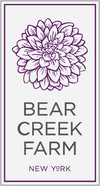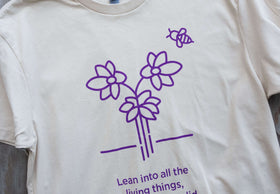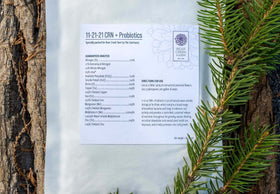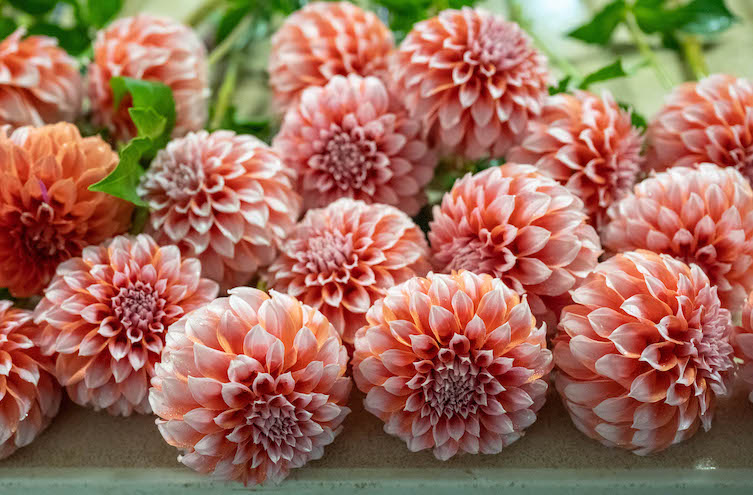Since the inception of Bear Creek Farm, I have been reticent to attribute specific human traits (love, persistence, loyalty) to flowers. I fully understand the historical truth, function, and beauty represented by symbolic botanical language. It extends as far back as ancient mythology, folklore, the writings of William Shakespeare, and the romantic poets, However, I have issues with this practice today. We have evolved, and so too must the “language” of flowers.
If one casts back to the Victorian tradition of the 1800’s, the purpose of attributing very specific qualities to flowers rested in the tightly bound corset of social etiquette. Flowers were, in a sense, coded messages – conveying what one was not permitted to say out loud. As a result, the type and manner in how flowers were selected and presented was, in fact, arguably more than symbolic – one can see how they would signal a response to a proposal of marriage, or make clear hurt or disdain. The manner in which flowers were delivered was also deeply symbolic. For example, an affirmative response to a question was delivered in flower(s) held in the right hand, as opposed to a negative response which would have been passed by the left hand. This literal and specific language of plants and flowers was used to convey complex emotions. (It is hard to imagine the cost of such a truncated internal conversation, but never mind, I digress.)
In a Victorian context (where people generally “spoke” fluent flower) flowers presented upside down implied the opposite of their traditional meaning. Colors of flowers were telling in terms of intent. Ribbons were a clue – if tied left, the specific symbolism of the flower was applicable to the giver, and if tied to the right the symbolism suggested a quality of the receiver. Although such messages and the specific symbols have, fortunately, evolved into spoken words, the habit of “perfumed words” continues to this day.

Poet Emily Dickinson relied upon Almira H. Lincoln Phelps’s written work on botany. While Phelps offered her own list of floral symbolism, she did encourage readers to personalize and create their own such list. Phelps was a significantly more broadminded in her interpretation of the meaning of flowers and plants. It is easy to see why her work would have drawn the Poet. Phelps describes a white chrysanthemum as “truth needing no protestation”, a yellow chrysanthemum as “a heart left to desolation”, a dahlia as “forever thine”, and a peony as “ostentation”.
Phelps’s description of a tulip is perhaps not what one would like to convey in a gift, but is nonetheless artful – “vanity; though hast metamorphosed me!”. She describes snapdragons as having been “flattered with false hopes”.
Herein lies the problem with anthropomorphizing plants to human qualities. In attributing overly specific human traits to flowers, it winnows natural horizons and imaginings - rather than broadening them. If one can ignore the tendency towards increasingly simplistic labeling of one trait per flower, the point of floral beauty circles back to its root – the celebration of the natural world - and the interplay of human experience within that vast tapestry. Who cares what flowers mean? If one is fortunate enough to hold a bouquet overflowing with a variety of unexpected blooms and blossoms, it becomes possible to understand flowers as the starting point of all earthbound bounty - inverted constellations of beauty, or a different version of a nighttime sky. The symbolism of flowers is properly understood as broadly aspirational - such as health, fertility, and paradise. Flowers are disrupters, rule-breakers. They encourage us, humble growers to step away from overly strict regimens of discipline in cultivation. Flowers represent the energetic flow between humans and nature, allowing the grower to express whatever they wish to express.
That said, many mornings I am taken up enjoying my beautiful tulips. I’ve scarcely any time to consider whether the bouquet I mean to take to lunch this afternoon with friends requires that my host has metamorphosed me. I just want her flowers to be dewy, light, and life-springtime-affirming. Create your own flower memory guide.
Select the flowers one recalls as personally significant to plant or to gift. Enjoy them. What they “symbolize” is tangential at best. A flower grown or purchased might be shared with a specific memory. Any bouquet containing a favorite bloom is like giving a little piece of yourself away. There is a vulnerability in that. Or, if someone ever mentioned a flower that was special to them - this is the one to send, selecting an atypical flower says: I remember, I am listening.
To me, flowers are a deeply personal expression of many kinds of yearnings (making the world beautiful, play unbridled in nature, risk things, remember things - be they people or experiences). Many of these are specific to a memory suffused with true and deep meaning. Flowers can send us tumbling back through time on the subtle scents of tulips, dahlias, or peonies. The windows that these remembrances crack open – a summer breeze - are special.
Steal a page from Almira H. Lincoln Phelps and write your own list of what flowers mean to seed your own Family Field Guide to the meaning of flowers. If you and your gardener friends have sunk your trowels into the damp earth, you have no doubt swapped ingrained floral memories. A friend relayed to me that she can’t catch a whiff of a gardenia without recalling early childhood; at what seemed then to be enormous blossoms, that, once plucked yellowed quickly - but threw a scent (impossible to replicate) - that even now erases the years.
I’m not certain that I am comfortable burdening a flower with the responsibility of symbolizing epic things such as strength, or love, or resilience. This expectation makes me imagine a blossom buckling under the weight of it all, like a peony bloom after a drenching rain. I advise that you not let these associations tamp down your imaginings. Think first of the inherent beauty of a bloom – one which elevates us all, lifts our spirits, and opens our hearts.





Wonderful article, and I wholeheartedly agree. Thank you for writing this!
Great article. Truly brings some depth to the meaning of flowers, a little history, and how we have evolved. Interesting stuff.
Excellent post and reflection shared with us! thank you 🤍